Area : 1412 Sq. Km
Altitude : 40m to 50 m
Climate : Temperature Range : 40°C to 12°C
Best Time To Visit: Mid October-Mid June, November and February is the best time for sighting the lions
History of Gir National Park
The Conservation History of Gir National Park deals with the conservation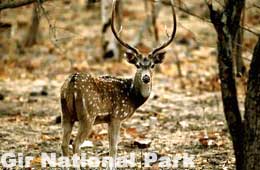 of Asiatic lions, whose population had dropped tremendously in the early 20th century. Gir National Park is a beautiful park dotted with deciduous forests, interspersed with semi-evergreen and evergreen flora, acacia, scrub jungle, grasslands and rocky hills, along with an abundance of fauna. Sprawling over an area of 1412 sq km, the park is one of the most charming National Parks in India.
of Asiatic lions, whose population had dropped tremendously in the early 20th century. Gir National Park is a beautiful park dotted with deciduous forests, interspersed with semi-evergreen and evergreen flora, acacia, scrub jungle, grasslands and rocky hills, along with an abundance of fauna. Sprawling over an area of 1412 sq km, the park is one of the most charming National Parks in India.
The conservation history of Gir National Park takes us back to the early 1900s. At that time, the count of lions had dropped down to just 15 through slaughter for trophy hunting. When the British viceroys brought this matter to the attention of the Nawab of Junagadh, he ensured the protection of the park. Lord Curzon, especially, requested the Nawab to conserve the lions. Thus, the forest area of Gir and its lions were declared as protected by the Nawab. A ban was also imposed on the shooting of lions.
The conservation history of Gir National Park also
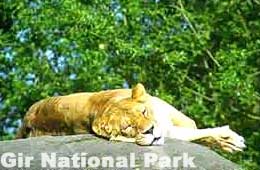 includes other factors that make conservation of the park essential. Gir is the largest compact tract of dry deciduous forest in the semi arid western part of India. It has the maximum number of carnivores, and also has the largest population of marsh crocodiles in the country. The park provides shelter to all these forests and animals.
includes other factors that make conservation of the park essential. Gir is the largest compact tract of dry deciduous forest in the semi arid western part of India. It has the maximum number of carnivores, and also has the largest population of marsh crocodiles in the country. The park provides shelter to all these forests and animals.
Sightseeing in Gir National Park
Apart from Wildlife attractions and Safaris in Gir National Park you can also enjoy the tribal village visit and historic town of Junagadh. A couple of tribes still reside inside the park co-existing with the wild animals. A visit to these tribal villages is an interesting experience that introduces the visitors to the unique lifestyle and ways of living of the tribal people.
* Uparkot Fort: Famous for its virtual inaccessibility.
* Chorwad beach: A delightful resort on the sunny coast of Gujarat.
* Ahmadpur Mandvi: One of the finest beaches in India.
* Damodar: A sacred tank marks the ascent to the Girnar temples.
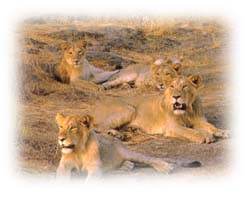
* Ashoka's Rock Edicts: On the way to Girnar, fourteen rock edicts of the Emperor Ashoka can be seen inscribed on a great boulder.
* Maqbara: The mausolea of the Nawabs, the traditional rulers of Junagadh.
* Tulsi Shyam Hot Spring.
* Somnath temple: Temple of Somnath is one of the twelve most sacred Shiva shrines in India.
* The Temple of Girnar.
Jeep Safari : The best way to observe the big cats is, of course, in their natural surroundings, at dawn and dusk, when they are on the prowl. Wildlife viewing in the Gir’s is best done, by driving via jeep around the forest.
surroundings, at dawn and dusk, when they are on the prowl. Wildlife viewing in the Gir’s is best done, by driving via jeep around the forest.
How To Reach Gir National Park
Air : The nearest airport from Gir is Keshod 90-kms via Veraval. Visitors can easily catch daily flights from Mumbai to Keshod.
Rail : The nearest rail connection is the meter gauge rail line of 395-kms from Ahemdabad. Road : Gir is situated at a distance of 400-kms from Ahmedabad via Rajkot, Junagadh and Mendarda. State Transport buses are easily available from Junagadh and Veraval to Gir, between November and June.
General Info / Tips
Do not disturb the animals during day time as most of the nocturnal animals sleep
during day time.
» Do not try to irritate the animals or make them angry by teasing them.
» Take official guides along with you on the park trip.
» Do not smoke inside the park.
» Do not use flash or intrusive photography.
» Picking of plants and insects is strictly prohibited.
» Wear loose fitting and simple clothes that blend with the park surroundings.
» For the safety of the visitors, walking and hiking within the vicinity of the
park is not allowed.
» Camping and picnicking is not allowed within the park.
» Carry plenty of water along with you.


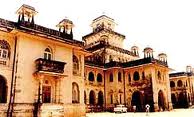
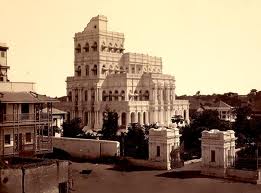
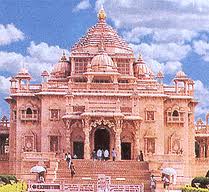
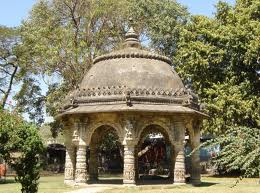









Wild Life Parks